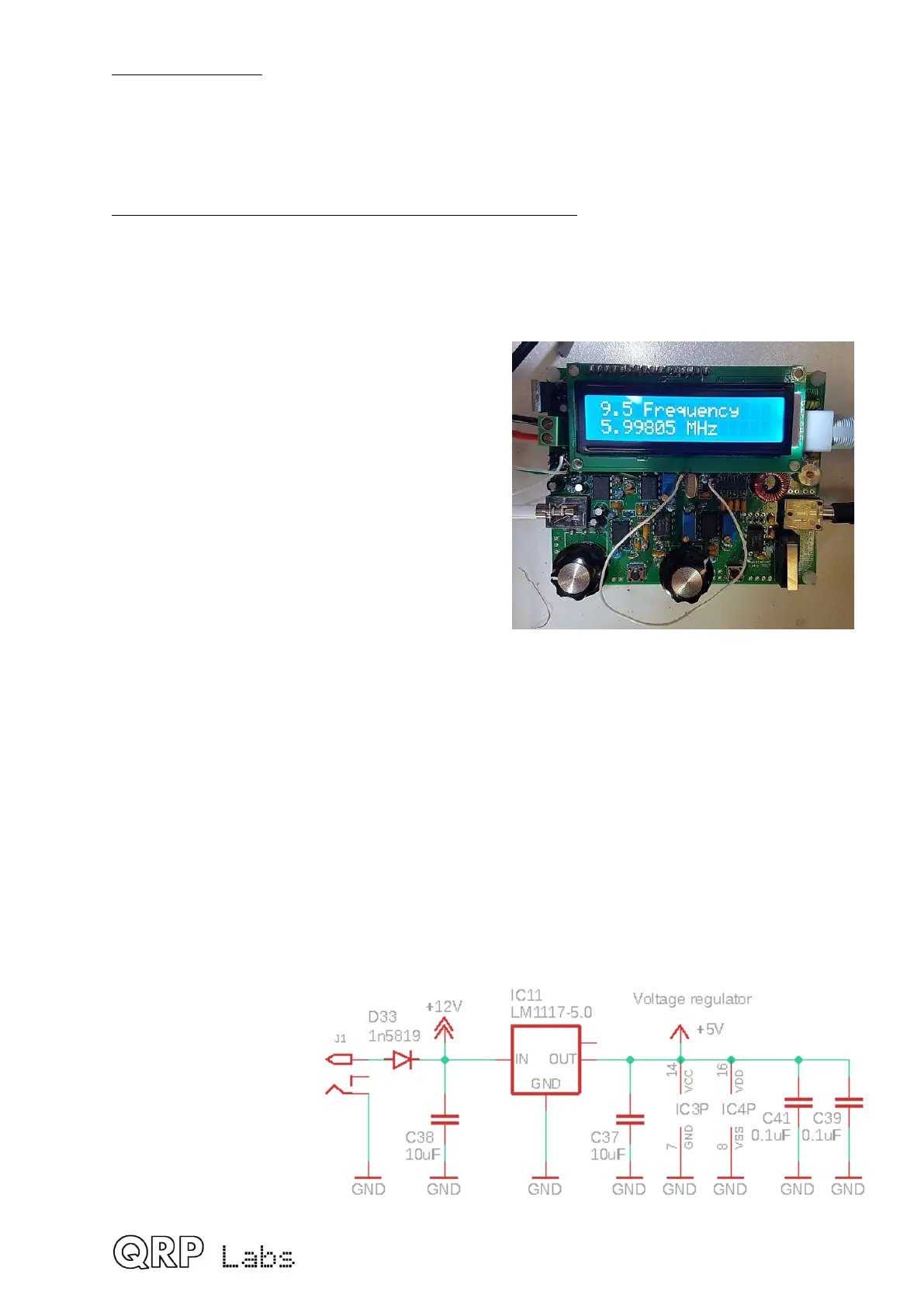IC9 pin 1 4.84 IC9a output
IC9 pin 2 4.84
IC9 pin 3 0.65
IC9 pin 4 0.00
IC9 pin 5 0.67
IC9 pin 6 2.44
IC9 pin 7 2.44 IC9b output
IC9 pin 8 11.67
IC10 pin 1 5.83 IC10a output
IC10 pin 2 5.83
IC10 pin 3 5.83
IC10 pin 4 0.00
IC10 pin 5 4.21
IC10 pin 6 3.94
IC10 pin 7 5.83 IC10b output
IC10 pin 8 11.67
LCD pin 1 (leftmost) 0.00 LCD VSS supply pin
LCD pin 2 4.94 LCD VDD supply pin
LCD pin 3 0.57 LCD Contrast
LCD pin 4 4.92 LCD RS pin
LCD pin 5 0.00 LCD RW pin
LCD pin 6 0.00 LCD E pin
LCD pin 7 1.08 LCD DB0 pin
LCD pin 8 1.08 LCD DB1 pin
LCD pin 9 1.06 LCD DB2 pin
LCD pin 10 1.04 LCD DB3 pin
LCD pin 11 0.00 LCD DB4 pin
LCD pin 12 4.94 LCD DB5 pin
LCD pin 13 4.92 LCD DB6 pin
LCD pin 14 0.00 LCD DB7 pin
LCD pin 15 4.41 LCD back-light anode
LCD pin 16 (rightmost) 0.00 LCD back-light cathode
5.5 RF Power output check
If you go into menu “9.2 RF Power”, you can check
your RF power output. Your RF output should
preferably be connected to a dummy load, since the
RF power calculation assumes that the voltage is
across a 50-ohm load.
In the top right corner area of the PCB, you will find a
pad on the PCB to which the L1 wire is soldered. This
pad is connected directly to the RF output pin of the
BNC connector (see diagram). If you connect a wire
from here, to pin 2 of the 4-pin DVM/RF Power header, then key-down, the display will read
the power output in Watts. It is easiest to have the transceiver in Straight key mode and
squeeze the paddle.
Remember that the simple diode RF detector is not likely to be particularly accurate. But if
you see a reading of a few watts, it will give you confidence that your transmitter is working
properly.
105
